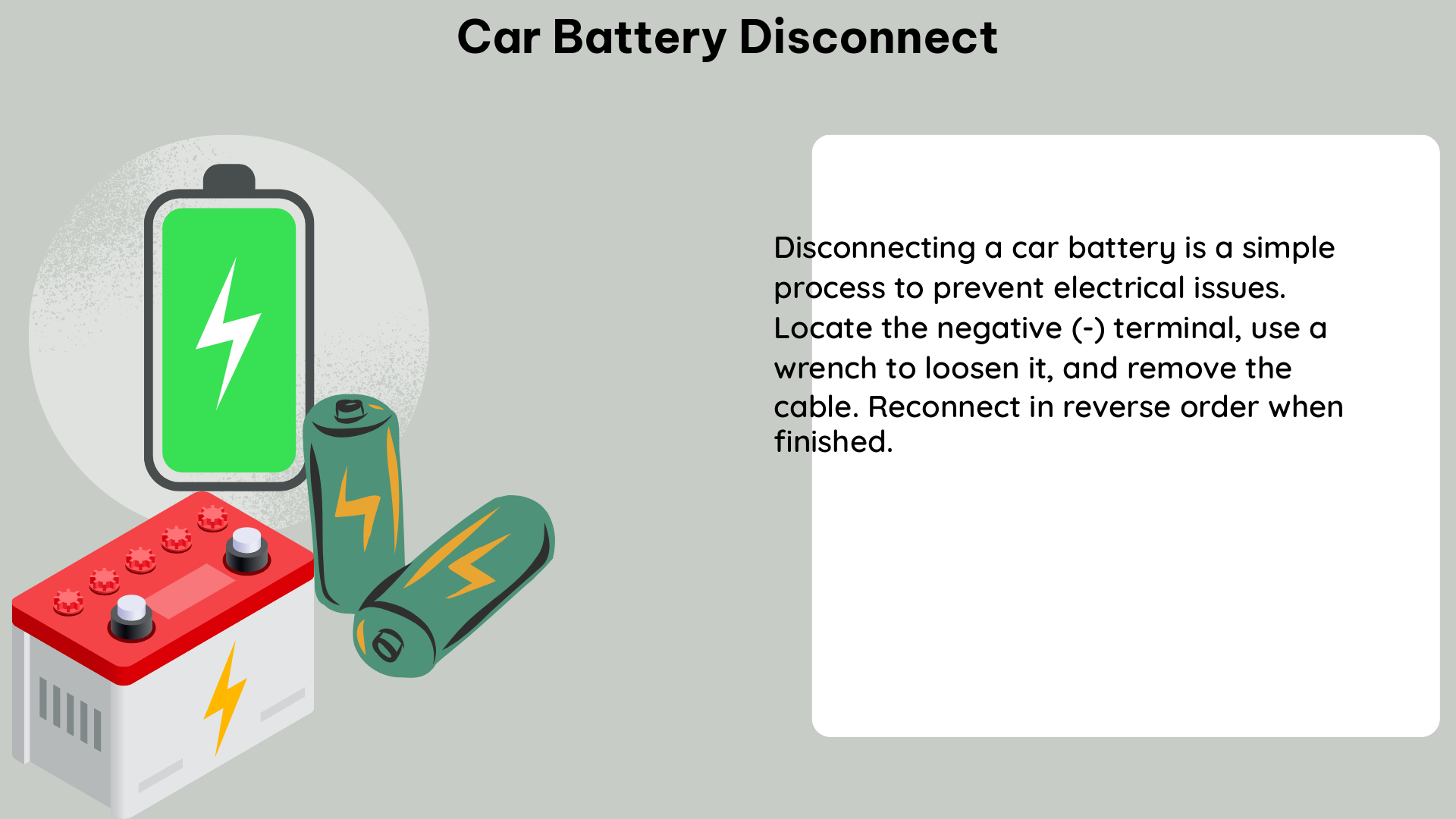Disconnecting a car battery is a crucial step in various maintenance and repair procedures, ensuring the safety of both the vehicle’s electrical system and the technician. This comprehensive guide delves into the technical specifications of car battery disconnection and provides a detailed DIY walkthrough to help you navigate the process with confidence.
Technical Specifications of Car Battery Disconnect
Voltage
The standard voltage for a car battery is 12 volts. When disconnecting the battery, it is crucial to maintain this voltage supply to the vehicle’s subsystems to prevent data loss or damage to the electrical system. Failing to do so can result in the loss of critical information stored in the vehicle’s onboard computers, such as radio presets, engine control unit (ECU) settings, and diagnostic trouble codes.
Current
The current supplied by a car battery can range from 40 to 100 amps, depending on the battery’s size and the vehicle’s electrical load. When disconnecting the battery, it is essential to consider the maximum current that the disconnect tool can handle to prevent damage to the tool or the electrical system. Using a tool with an insufficient current rating can lead to arcing, sparks, and potential fire hazards.
Disconnect Tool
A memory saver or a battery saver is a common tool used to maintain the voltage supply to the vehicle’s subsystems when disconnecting the battery. These tools can supply 12 volts to the vehicle’s electrical system through the OBD2 port or the cigarette lighter socket, ensuring that critical data is preserved during the disconnection process. Memory savers typically have a current rating of 5-10 amps, which is sufficient for most vehicle applications.
Disconnect Point
The negative terminal of the battery is the standard point of disconnection. Disconnecting the negative terminal first ensures that the electrical system is grounded, preventing any electrical damage or sparks that may occur during the disconnection process. This approach also helps to avoid creating a potential short circuit, which could damage sensitive electronic components.
DIY Guide to Car Battery Disconnection

Preparation
Before disconnecting the battery, ensure that the vehicle is turned off and the keys are removed from the ignition. Identify the battery’s negative terminal and locate the memory saver or battery saver tool. This step is crucial to prevent any unintended activation of the vehicle’s electrical systems during the disconnection process.
Connect the Memory Saver
Connect the memory saver to a 12-volt source, such as a spare battery or a battery charger. Ensure that the memory saver is properly grounded to the vehicle’s chassis or the negative battery terminal. Next, connect the memory saver’s output to the OBD2 port or the cigarette lighter socket, depending on the tool’s design. This step will maintain the voltage supply to the vehicle’s subsystems during the battery disconnection.
Disconnect the Negative Terminal
Using a wrench or pliers, disconnect the negative terminal of the battery. Ensure that the wrench or pliers do not touch any other part of the vehicle’s electrical system to prevent electrical damage. Avoid placing the wrench or pliers on the positive terminal, as this could create a short circuit and potentially cause sparks or fire.
Reconnect the Battery
Once the repair or maintenance is complete, reconnect the negative terminal of the battery. Ensure that the connection is secure and free of any corrosion or debris. Disconnect the memory saver from the 12-volt source and the vehicle’s electrical system, allowing the battery to resume its normal function.
Additional Considerations
- Always wear protective gloves and eye protection when working with car batteries to prevent injury from potential sparks or acid spills.
- Ensure that the battery is properly secured in the vehicle to prevent it from shifting during operation, which could lead to damage or disconnection.
- Consider installing a battery disconnect switch or a kill switch to simplify the battery disconnection process and provide an additional layer of safety.
- Refer to the vehicle’s service manual for any specific instructions or precautions related to battery disconnection, as they may vary depending on the make, model, and year of the vehicle.
By following the technical specifications and the DIY guide provided in this article, you can ensure that your car battery disconnection process is safe, effective, and preserves the integrity of your vehicle’s electrical system.
References:
- Using a Memory Saver When Disconnecting Your Car Battery (https://www.youtube.com/watch?v=wb3Dq4NM3QY)
- Do I have to disconnect both the negative and positive terminal of the battery to change my radio to an after market one? (https://www.reddit.com/r/CarAV/comments/vledsj/do_i_have_to_disconnect_both_the_negative_and/)
- Kill Switch: How to Install A Battery Disconnect | AgWeb (https://www.agweb.com/news/machinery/used-machinery/kill-switch-how-install-battery-disconnect)

The lambdageeks.com Core SME Team is a group of experienced subject matter experts from diverse scientific and technical fields including Physics, Chemistry, Technology,Electronics & Electrical Engineering, Automotive, Mechanical Engineering. Our team collaborates to create high-quality, well-researched articles on a wide range of science and technology topics for the lambdageeks.com website.
All Our Senior SME are having more than 7 Years of experience in the respective fields . They are either Working Industry Professionals or assocaited With different Universities. Refer Our Authors Page to get to know About our Core SMEs.